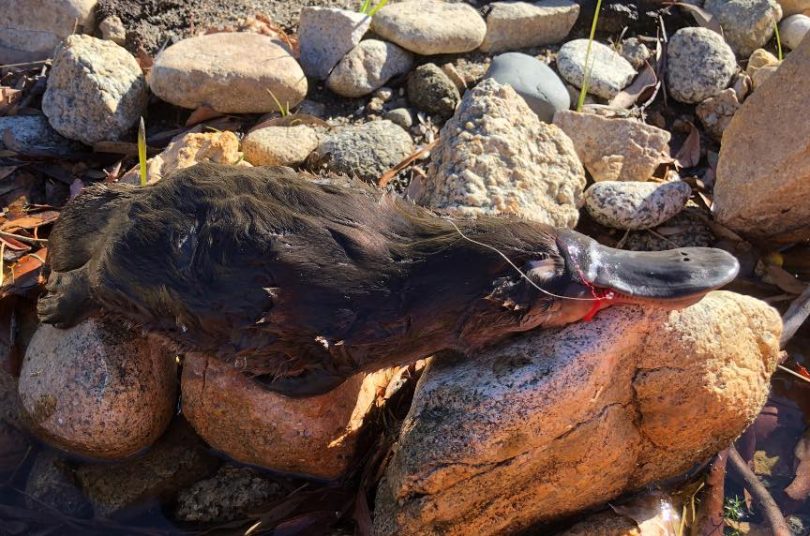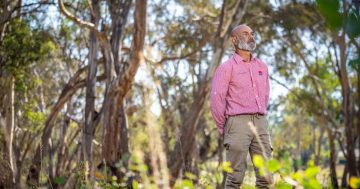
The male platypus that died after becoming entangled in a fishing line near Lake Jindabyne. Photo: Australian Alps National Parks Facebook page.
A male platypus entangled in a fishing line has died near Lake Jindabyne in the NSW Snowy Mountains.
Australian Alps National Parks found the egg-laying mammal on the Thredbo River outflow into Lake Jindabyne on Tuesday, 27 April, with the line still lodged in its mouth.
The organisation that helps to manage the national parks in the Australian Alps said it’s likely the platypus drowned.
Professor Richard Kingsford is director of the Centre for Ecosystem Science at the University of NSW Sydney and co-author of the research paper: A stitch in time – Synergistic impacts to platypus metapopulation extinction risk.
He said pollution in waterways from plastic, rubbish and fishing line was a big threat to platypuses.
“Platypuses can easily become entangled in fishing line and have no way of freeing themselves,” Professor Kingsford said.
“And fishing line can cut through a platypus’ skin, muscle and bone.”
“The situation requires fishers and campers to be more responsible, which most are, but every now and again this happens.”
He said yabby traps are also threatening platypuses in New South Wales waterways and is pushing for the NSW Government to ban them.


“The platypus goes after the yabbies in the trap but then can’t get out and drowns,” Professor Kingsford said.
Professor Kingsford is part of research that is tracking platypuses near Lake Jindabyne and hoped to find out if the deceased male platypus was one his team had tagged.
Australian Alps National Parks said platypuses are found in most rivers, streams and impoundments in the area it covers.
Following the recent death of the male platypus near Lake Jindabyne, the organisation has asked anglers fishing in the area and other areas where platypuses live to retrieve all fishing line and lures from the banks and water.
Australian Alps National Parks has also asked for anglers to stop fishing if they notice platypuses feeding nearby and to never leave fishing lines unattended for any length of time.
Professor Kingsford is also part of a group formed by other UNSW researchers, the Australian Conservation Foundation, World Wildlife Fund-Australia and Humane Society International Australia, which is pushing for the Federal Government to recognise platypus as a threatened species.
Currently, platypuses are listed as ‘near-threatened’ under the IUCN Red List, which is based on observed population declines and local extinctions.
However, research led by UNSW Sydney found the parts of Australia where platypuses are found has shrunk by at least 22 per cent or about 200,000 square kilometres – an area almost three times the size of Tasmania – in the past 30 years.
Professor Kingsford thinks people would take more care in and around Australian waterways if they were aware of these diminishing numbers.









